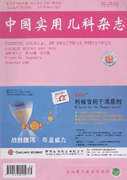Objective To discuss the changes of ambulatory blood pressure monitoring(ABPM) in children with vasovagal syncope (VVS).Methods A total of 72 children 〔VVS group,32 males,40 females,mean age (10.98±1.86)years〕 were enrolled in this study,who came from Children Syncope Outpatient Department or Inpatient Department of the Second Xiangya Hospital of Central South University from Sep 2008 to Feb 2010.After confirmed diagnosis of VVS by positive head-up tilt test (HUTT),each patient was given ABPM.Forty healthy children (19 males,21 females,mean age 10.24 ± 2.01 years) were as controls (control group).Parameters of ABPM in children were analyzed.SPSS 17.0 software was used for the statistical analysis of these data.Results (1)Mean pressure:24-hour mean systolic pressure (24hSBP),24-hour mean diastolic pressure (24hDBP),daytime mean systolic pressure (DSBP) and nighttime mean systolic pressure (NSBP) in VVS group were higher than those of the control group (P<0.05).(2)Blood pressure pattern:the ratio of non-spoon pressure pattern was higher than that of spoon pressure pattern with VVS (67%vs.18%,P <0.05).NDBP (P<0.05) and NSBP (P >0.05) were decreased and the systolic pressure differences and diastolic pressure differences in the daytime and at nighttime were higher in spoon pressure pattern than those of non-spoon pressure pattern with VVS (P<0.05).(3)Diagnostic experimental evaluation:the specificity,sensitivity,diagnostic coincidence,positive predict value and negative predict value of non-spoon pattern of ambulatory blood pressure pattern to VVS was 82.5%,66.67%,72.32%,87.27% and 57.89%,respectively.The Youden index was 45.28%.Conclusion There is autonomic nerve adjustment imbalance in children with VVS during asymptomatic time periods,especially the sympathetic nerve.The non-spoon pattern rate of fluctuation curve of ambulatory blood pressure in VVS children is higher,which is of diagnosis value to VVS children.

